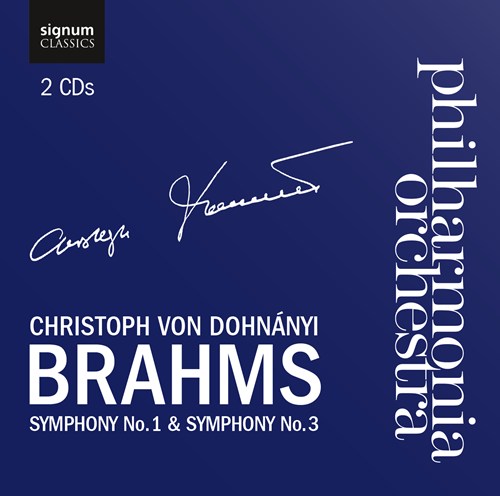Brahms Symphonies Nos 1 and 3
Weighty views of Brahms and a delightful Dresden coupling
View record and artist detailsRecord and Artist Details
Label: Profil
Magazine Review Date: 7/2011
Media Format: CD or Download
Media Runtime: 0
Catalogue Number: PH08043

Genre:
Orchestral
Label: Signum
Magazine Review Date: 7/2011
Media Format: CD or Download
Media Runtime: 0
Mastering:
Stereo
Catalogue Number: SIGCD250

Author: Rob Cowan
Both conductors take a broad, luxuriant view of the first movement (and both play the first-movement exposition repeat) but where Davis occasionally bends the line for rhetorical effect, Dóhnanyi is happy to keep the tempo relatively steady. Perhaps the biggest difference occurs towards the close of the second movement where Davis (at 7'13") basks in the music’s radiance, widening the expressive arch to do so, whereas Dóhnanyi (at 6'25" – the timings are telling in themselves), also a very sensitive interpreter, prefers to keep moving and concentrate instead on accompanying string figurations. Both performances are memorable but, while Davis seems more demonstrably smitten by the sheer lustre of Brahms’s writing, Dóhnanyi marks the stronger contrasts between the middle movements.
Dóhnanyi’s account of the First Symphony again opens weightily, the bass pedal a real joist-shaker. The first movement (with no repeat this time) is a dark, heavy-booted affair, sometimes a little dry, though the transition back to the recapitulation truly growls at you. But that’s far from the whole story: the slow movement is very lyrical with some effective instrumental dovetailing and plenty of light and shade, and the finale generates an impressive sense of joyous release. As to Davis’s Schubert Unfinished, breadth and depth of feeling prevail, the transition from repeated exposition to development section in the first movement as darkly mysterious as on any other version, certainly within the last 20 years. The second movement alternates nobility with a certain air of defiance and the quieter playing is extremely beautiful. Taken on its own terms, Sir Colin’s Staatskapelle Dresden coupling is highly recommendable.
Discover the world's largest classical music catalogue with Presto Music.

Gramophone Digital Club
- Digital Edition
- Digital Archive
- Reviews Database
- Full website access
From £8.75 / month
Subscribe
Gramophone Full Club
- Print Edition
- Digital Edition
- Digital Archive
- Reviews Database
- Full website access
From £11.00 / month
Subscribe
If you are a library, university or other organisation that would be interested in an institutional subscription to Gramophone please click here for further information.




